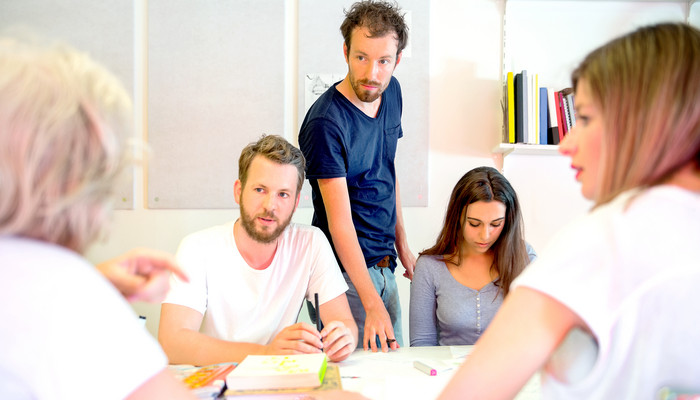In the technology world, people get inspired by new patterns and designs every day. However, excitement to build something new gets hampered by the tight timelines most of the times. Making amazing designs in limited timeframes is a challenge, even for an experienced UX Designer. Making a doomed product, just to hit the timelines is not even a choice 🙁
But that’s the magic, every UX designer is performing every day. The spell I am talking about is a blend of brainstorming, rapid prototyping, and usability testing. So, how a UX Designer combines the deadly three for fast tracking UX process? Yep, here are our killer tips to speed up things in user experience.
Brainstorming ideas
So, how do you identify the problem? Well, by asking a lot of questions to clients and all stakeholders involved and then listening patiently to their responses and ultimately finding out the specific features they are looking for. You can even use reverse engineer process to extract knowledge or design information and then reproducing design problems based on the extracted information.

What’s the best way to do brainstorming? A value proposition design, where you can simplify complex ideas into meaningful and practical illustrations. It’s a wonderful way to create products that your customers want by doing a comparative analysis of customer needs and then matching them with the product benefits. It will help you conclude which features will ultimately create value for your customers.
However, identifying information is not enough, you need to sketch out ideas in order to find out the solutions of the problems. With a time crunch, try to look for multiple solutions and not a specific solution at this stage. The best way to start is by using a pen and a paper and drawing sketches to scribble your first ideas. Generally, the first ideas are not that great as you are still in a process of understanding the problem. Don’t focus too much on the details in the first few solutions as you have limited time, if the idea is perfected, you will get a seasoned design and looking at multiple solutions gives you a better analysis of the problem.
Then comes the feedback part, you’ve limited time and there’s no point in running behind your prospective users. Here your colleagues can rescue you to filter the best idea. Make them aware of the situation and the problem, and once they understand the scenario, show them the sketches. Just show them and don’t explain how you arrived at the solution, it will be a more intuitive way of getting feedback from colleagues.
Rapid Prototyping
Great! So, you have refined your idea by now with a little help from your colleagues. Now, it’s time to revise your sketches and build a quick prototype. As you’re running against time, you can use themes and modules from different sites to finalize the look and feel of your product. It’s quicker than starting from a scratch.

You don’t have to consider this as your final prototype, but something that will help you in taking the first step towards the right design. The prototype is generally a fully functioning version of an application or an interface. But rapid prototyping is done to help users visualize and craft the user experience of the final product.
Your prototype should always include the complex interactions, key functionalities, and changes in workflow, technology or design. It will go through multiple iterations and therefore a good approach is to start prototyping broadly first and then filling the holes in other areas in the subsequent iterations. Identify the paths, users are going to take while performing the regular tasks and then weave them together to create your prototype.
Usability testing
The final and the most important step is testing your prototype to find the roadblocks or what’s not working. It’s actually about finding out what’s going to break the logical flow of your product and to get rid of it in the next iteration. Just put across a few screens in front of users and let them able to navigate through the product. You should be able to capture their behavioral information along with the feedback to determine the effectiveness of your design ideas.

Testing will give you an idea whether your product is addressing the right problem or not. You can plan for multiple rounds of testing as a product evolves with each prototype and user impressions change as well. Finalize what questions you want to ask your users, will it be a survey or a test or in person guided session. Usability testing will help you find the effective product that solves problems until then you are just killing off the bad ideas.
Once you have zeroed in on the idea that works, you can focus on perfecting your solution based on user feedback to improve its usability. You can moderate your early tests but once your right design is done, you can switch to unmoderated testing for your design to move in the right direction. There are a lot of strong opinions about the magic number 5 in usability testing, you can detect as much as 85% of the problems in an interface with a 31% probability of user encountering a problem. It will work wonders for a rapid usability testing to quickly refine and rework on the product.
Time is counting on you
Gone are the days when we followed the waterfall model where designers will get an entire month to follow each and every guideline of a better UX, then developers will work on the product for 3 months, then testers for 1 month and last one month for documentation and bug fixes. No client can wait that longer in today’s time as products will get outdated by the time they land in the market.
It’s vital for today’s designers to speed up the entire process and still follow the latest trends of users experience to build something useful, convenient, and creative in a quick time. Delight your customers by not delivering a site full of bugs and followed by excuses of limited time. Your clients are counting on you to give them the best, and you should not disappoint them, so embrace rapid prototyping and usability testing cycle for greater conversions and sales.
